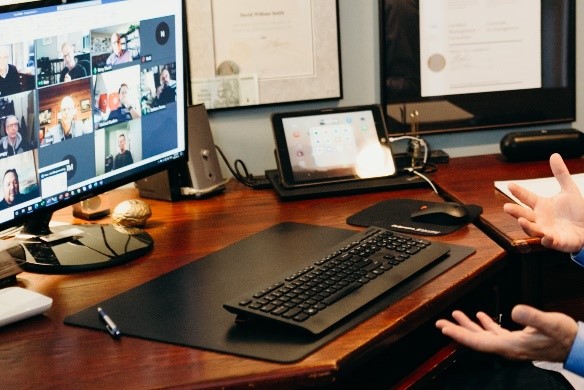The Two sides of Remote Working
The Desire to Work Remotely
Most of us are six months into social distancing and the remote working that goes with it. Don’t let the working from home dishearten you, there are many benefits, which is why so many workers have adapted to it since the arrival of COVID-19. A study by Zapier found that 74% of people would be willing to quit their job to work remotely and another study by Buffer found that 98% of remote workers would like to continue doing so, at least some of the time, for the rest of their career. Accordingly, 97% would recommend remote working to others and up to 70% were happy with the amount of time they worked remotely.
The Benefits of Working Remotely
The most cited reasons for satisfaction for remote workers included the ability to have a flexible schedule (32%), flexibility to work from anywhere (26%), not having to commute (21%). And, employers have referenced a range of benefits they are keen on too; increased employee engagement, boosted organizational efficiency, improved organizational flexibility, ability to hire from a wider talent pool, more resiliency in the face of issues that can compromise on-site working (natural disasters or illnesses), decreased commutes which adds up to lower stress and transportation costs and in some cases improved employee productivity. A study by Stanford found that employees are far more productive when working from home than when working from the office. All summed up these benefits certainly can make employers and employees happier.
The Drawbacks of Working Remotely
For the reasons listed above there may be a strong preference for remote work above and beyond the obvious safety fundamentals associated with COVID-19. However, there is another side to it with drawbacks that need to be considered.
- Less social interaction. Workers have less social interaction with their coworkers, which is why it is important to keep them engaged. Introverts may prefer the social distance, but a lack of social interaction can lead to other problems
- Decreased oversight. Managing remote workers is certainly possible, and some businesses have done very well operating entirely remotely. However, since workers are not physically located in the same place, managers must attempt to focus on outcome-based performance management as opposed to activity checking. This is a whole different management style to assume.
- Decreased ability to concentrate. When working from home, family members or pets can often prove distracting.
- Increased feelings of isolation and loneliness. Working alone, instead of in an office with others, can quickly transform feelings of solitude into feelings of isolation and loneliness which has an emotional impact.
Addressing the Drawbacks of Working Remotely
Fortunately, most of the drawbacks covered here can be remedied with the right approach. For example…
To combat social isolation, workers can connect frequently with others via phone or visual technologies.
Establishing healthy and creating a dedicated home workspace with acceptable ergonomics can help block out distractions
Clearly, remote working is not going to be easy to sustain for all organizations and it is not going away anytime soon. With the right leadership approach and strategy, employees and organizations can both realize significant gains from a remote working, a new fundamental in the times we are in. Virtual Leadership Matters Inc. helps clients with this new reality everyday.
The Author
David Smith, BComm, CMC, ACC, RPM has over 30 years of experience as an organizational leader and a decade as certified executive coach, facilitator and management consultant. He has served as a corporate executive (CEO), business owner and entrepreneur in multiple start-ups in different industries including one of Canada’s ‘50 Best Managed Companies’ and is Co-Founder of Virtual Leadership Matters Inc.



